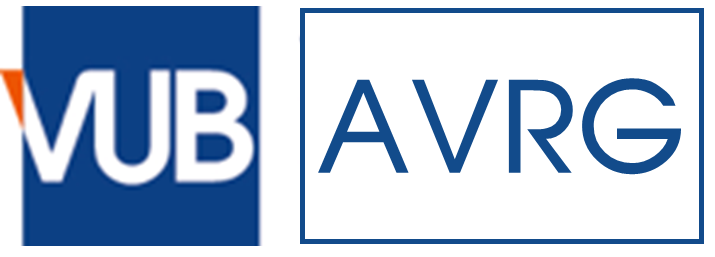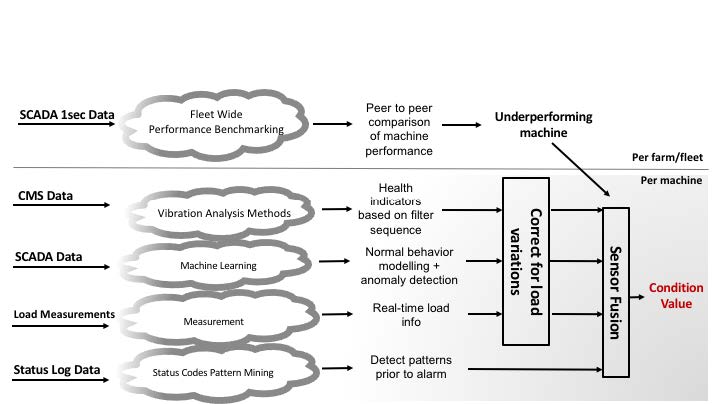Our integrated monitoring approach encompasses three main steps:
- Data acquisition: data is captured within one consistent dataset. This makes further analysis later on in the monitoring process easier. For a fleet of machines, each machine can be seen as one subsystem interconnected to a central database. Each machine has its own sensor and data-acquisition network consisting of machine embedded sensors and custom monitoring systems. The measurements done by the different data-acquisition devices are sent to the central data-warehouse. Sampling rates can vary from 0.002Hz to 20kHz.
- Data warehousing : Coming up with an effective data-warehouse architecture is not easy, since monitoring a whole fleet of machines generates a large amount of data that is non-equally sampled and heterogeneous in nature. Failures can often be expected to be driven by the response to transient events. Therefore, we also store the measurements during these transients in high detail.
- Distributed computing: Parsing and processing data is computationally intensive. Our database architecture distributes data across our cluster. In combination with this architecture it is also possible to perform parallelized querying and data-analysis and are able to lower processing times substantially. Our dedicated machine learning algorithms are implemented in a parallel-enabled environment if high parallelisation is required.


